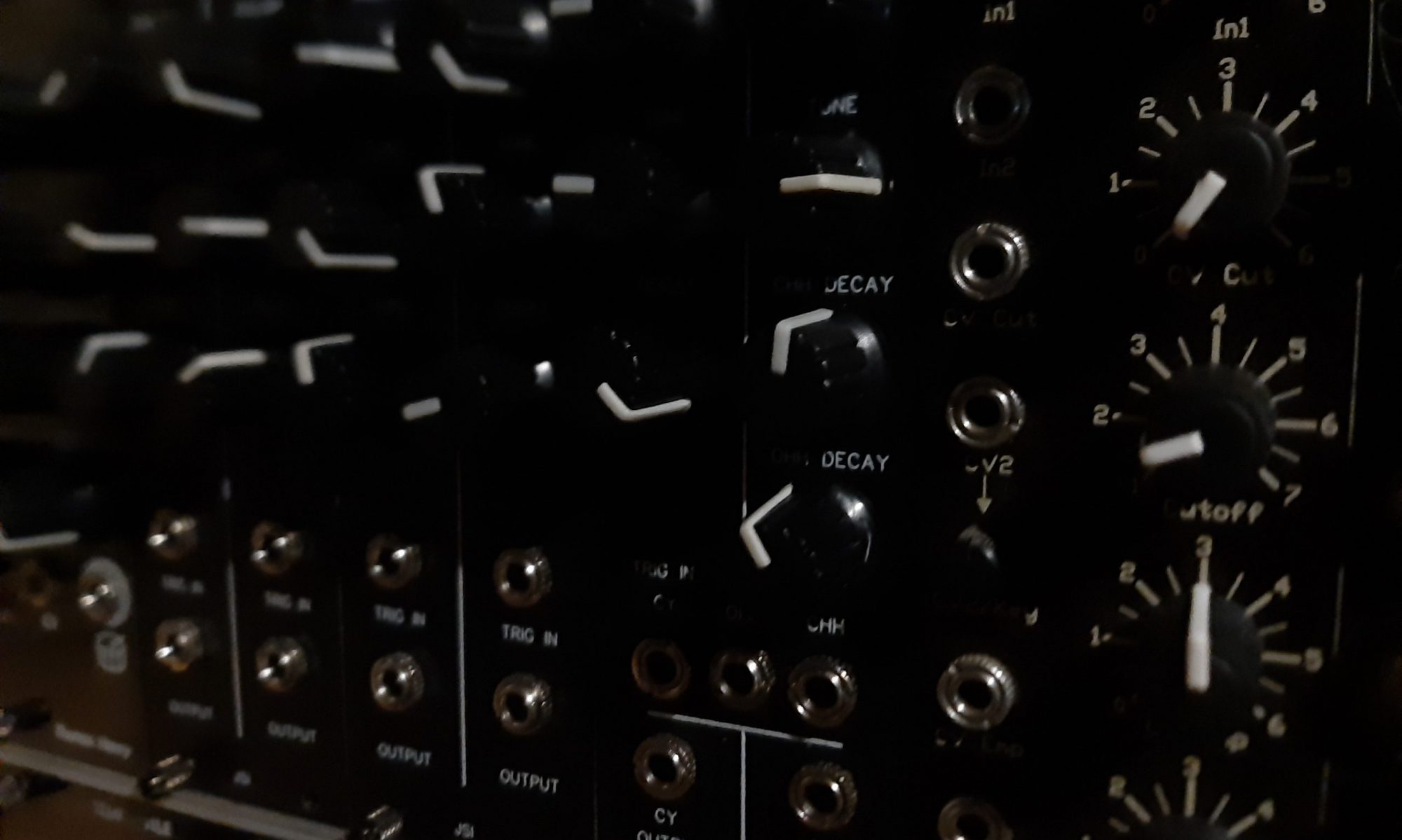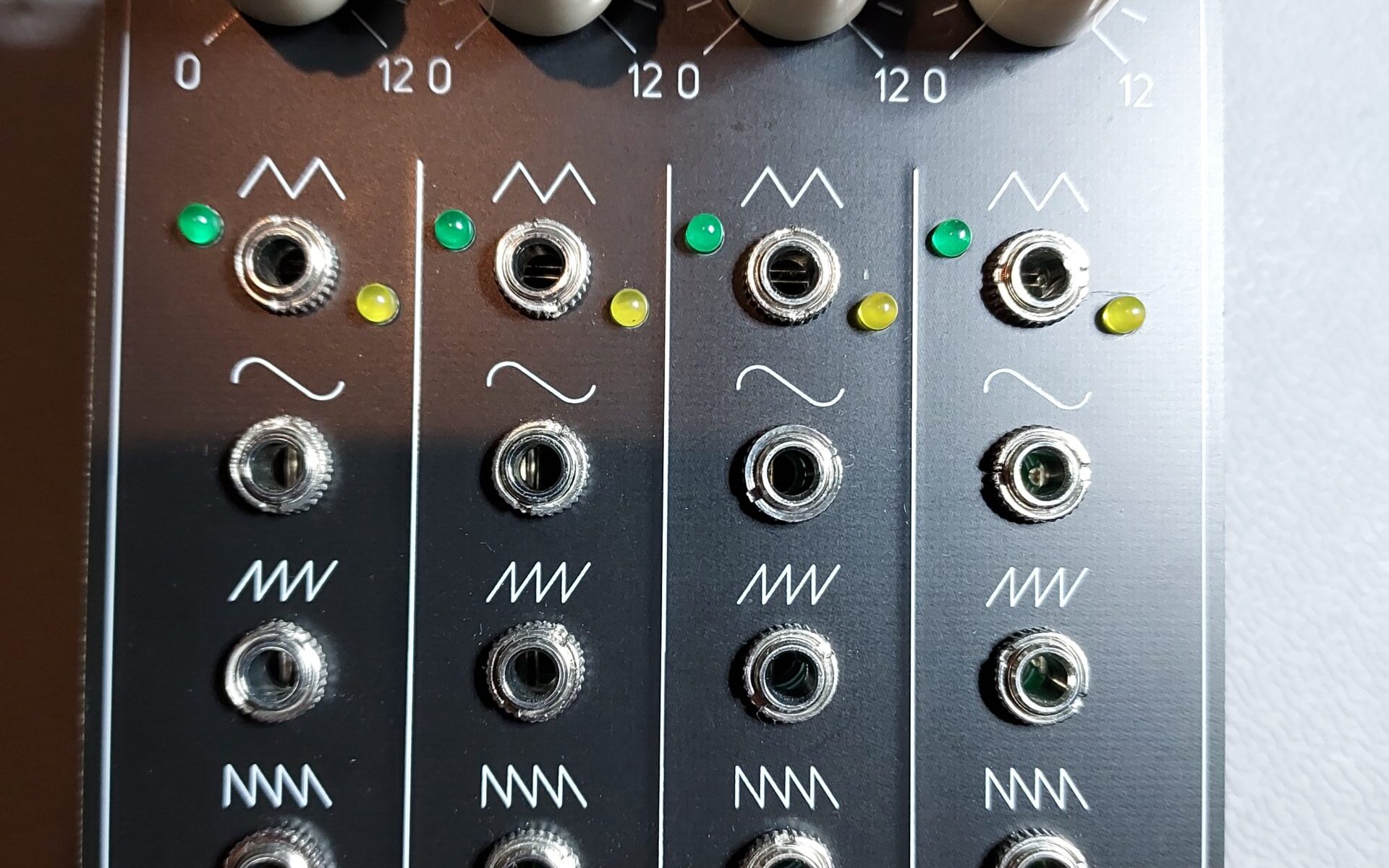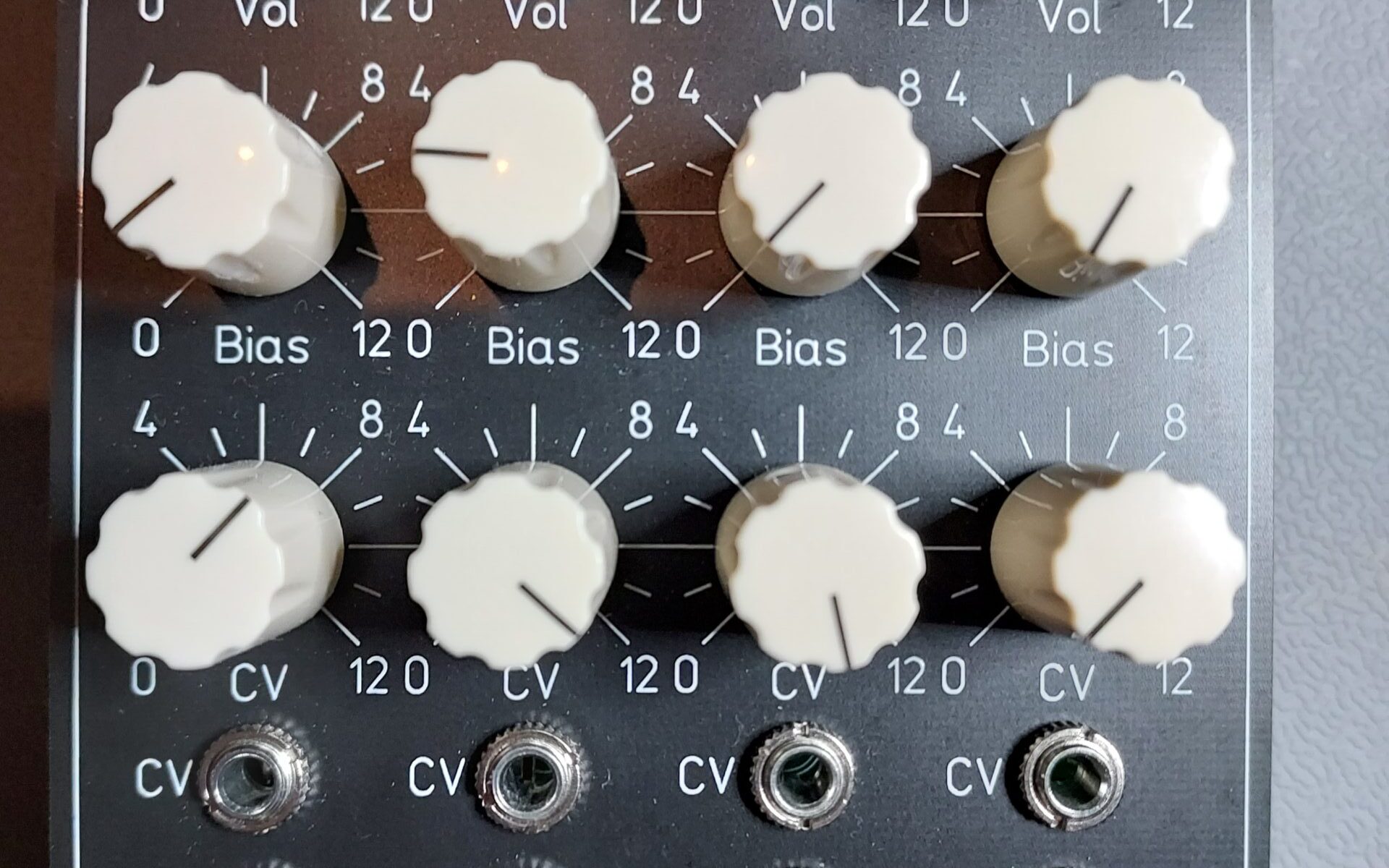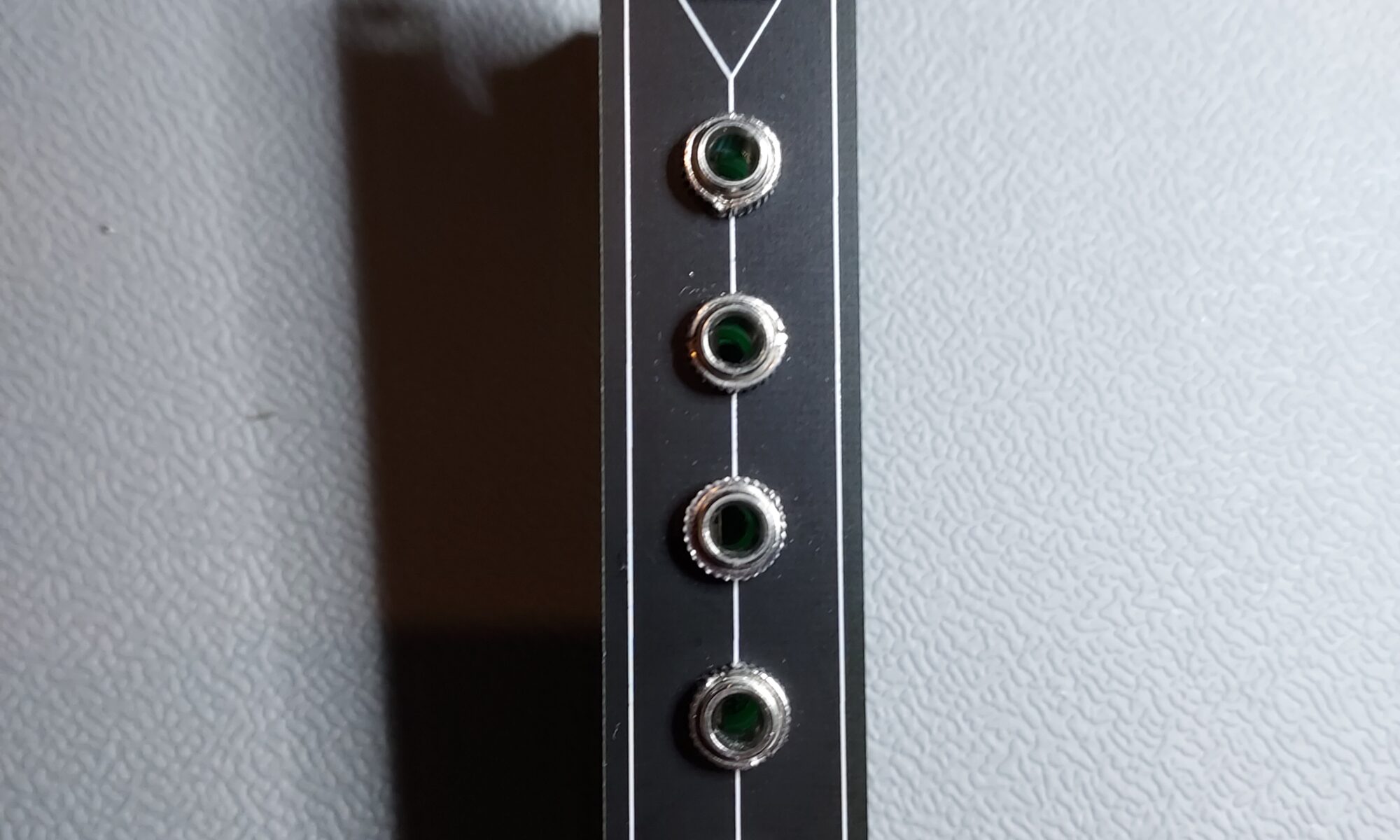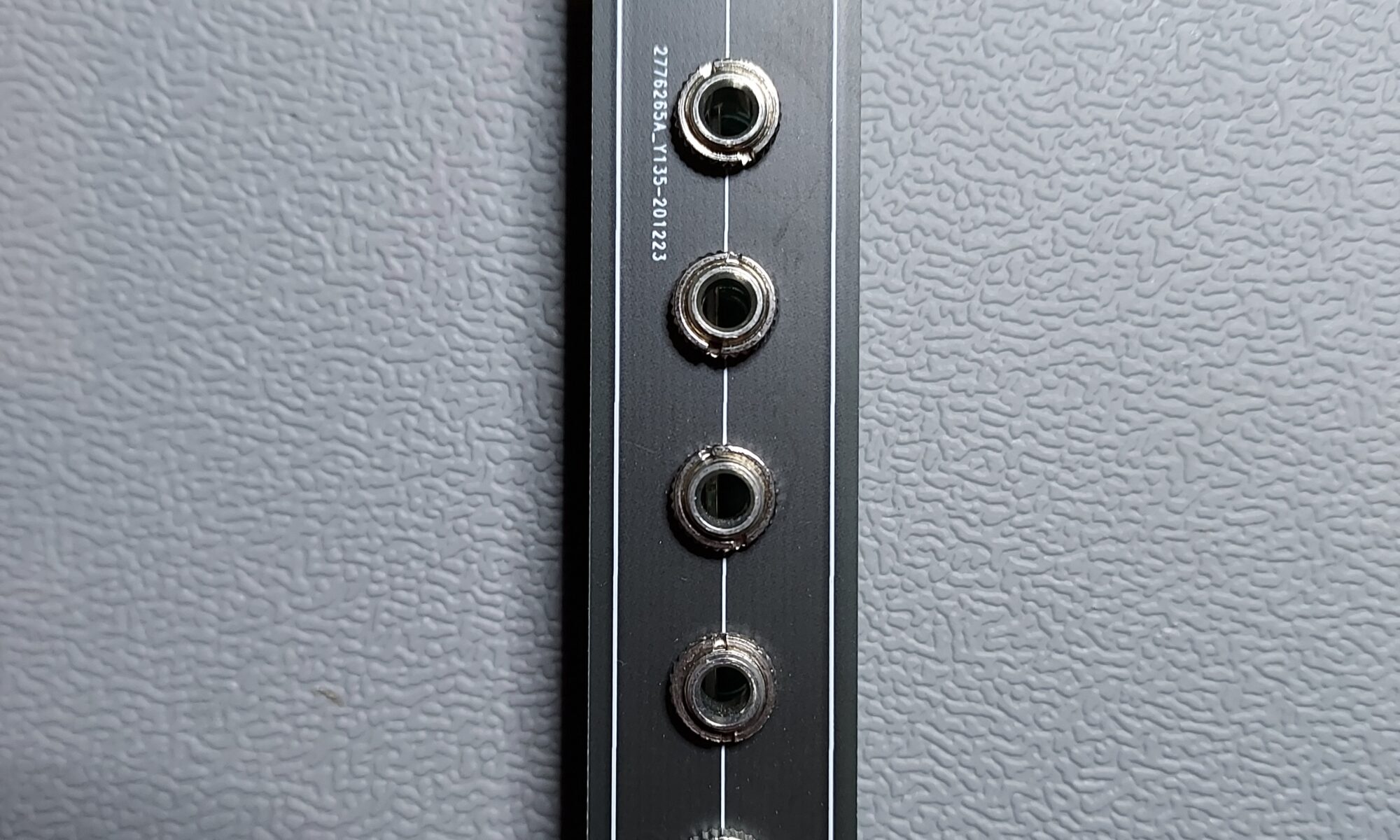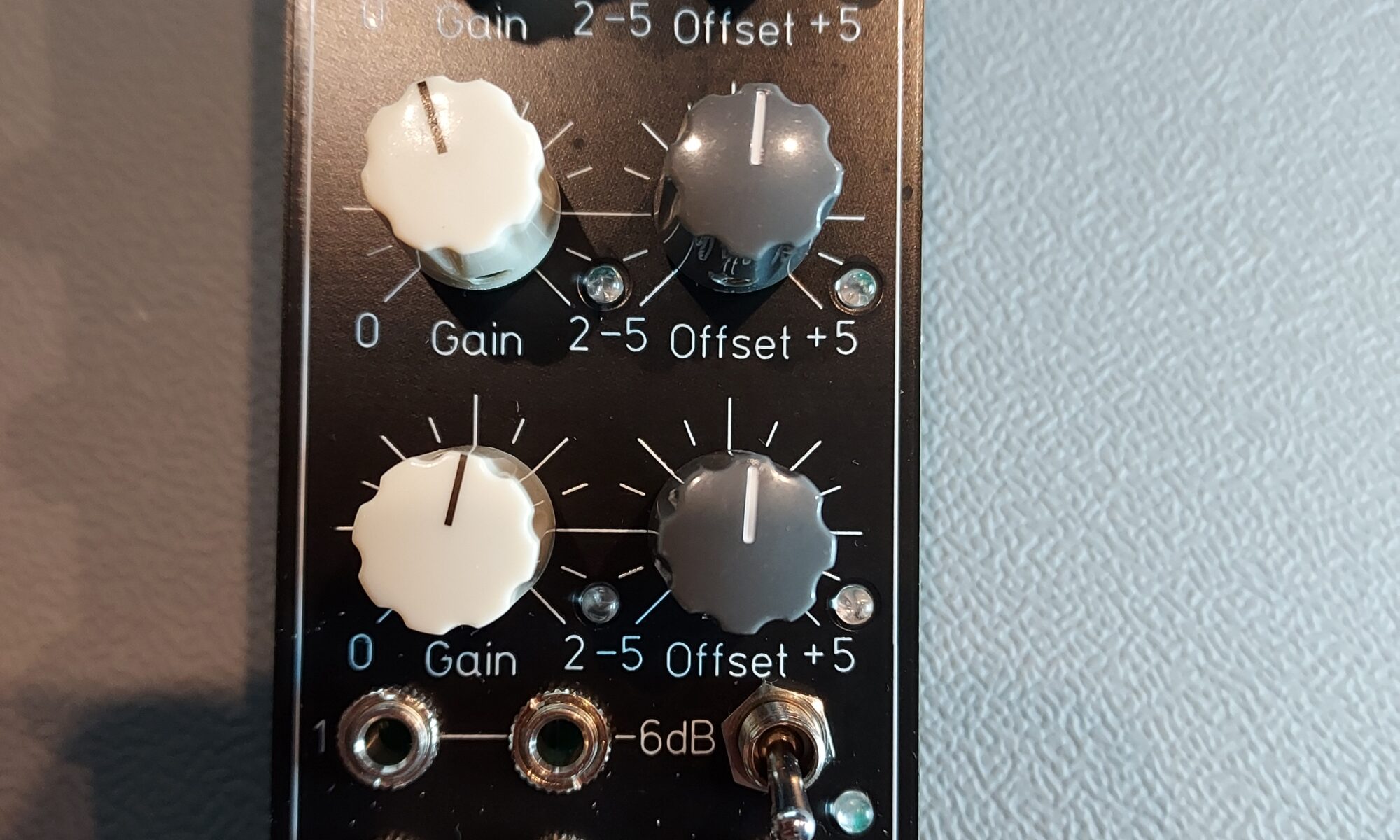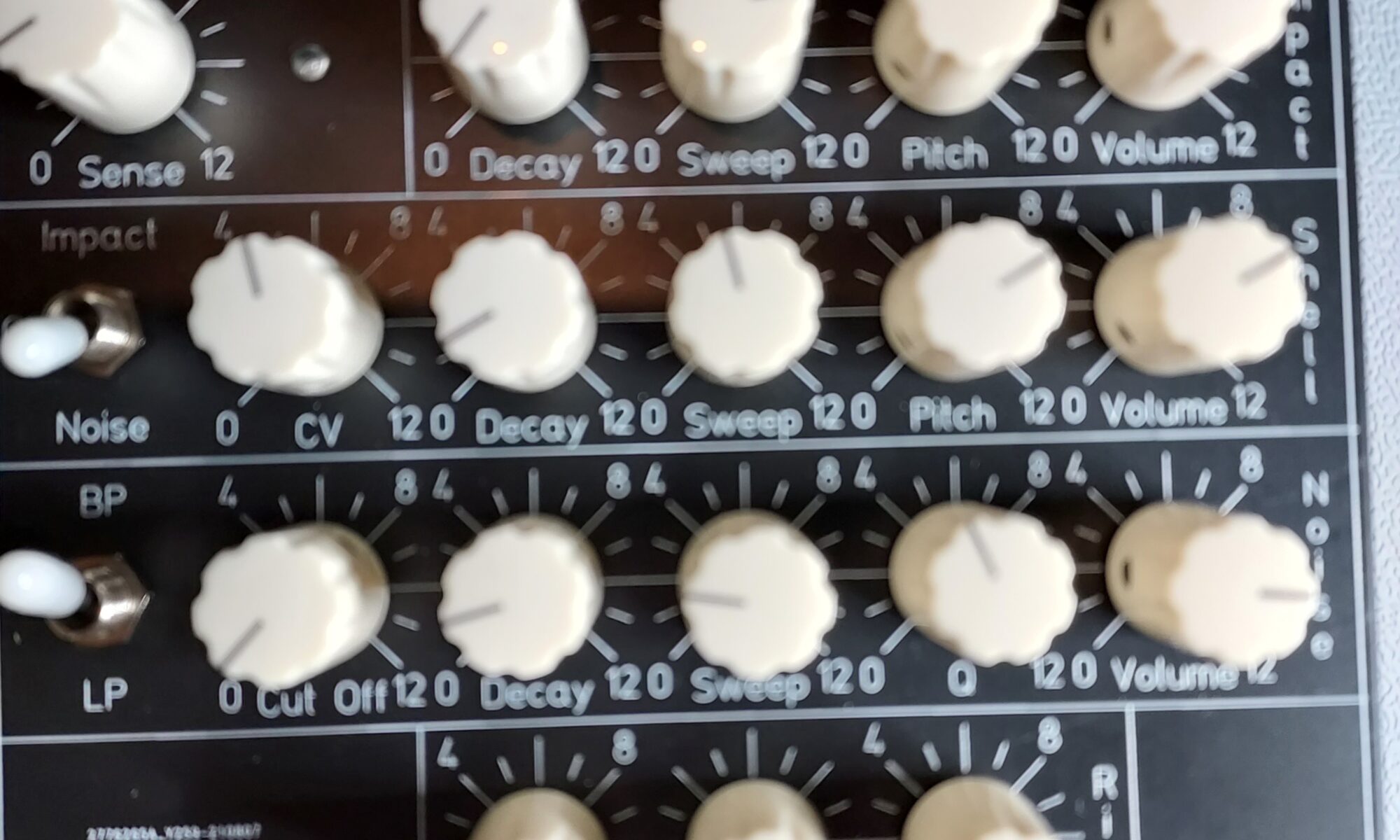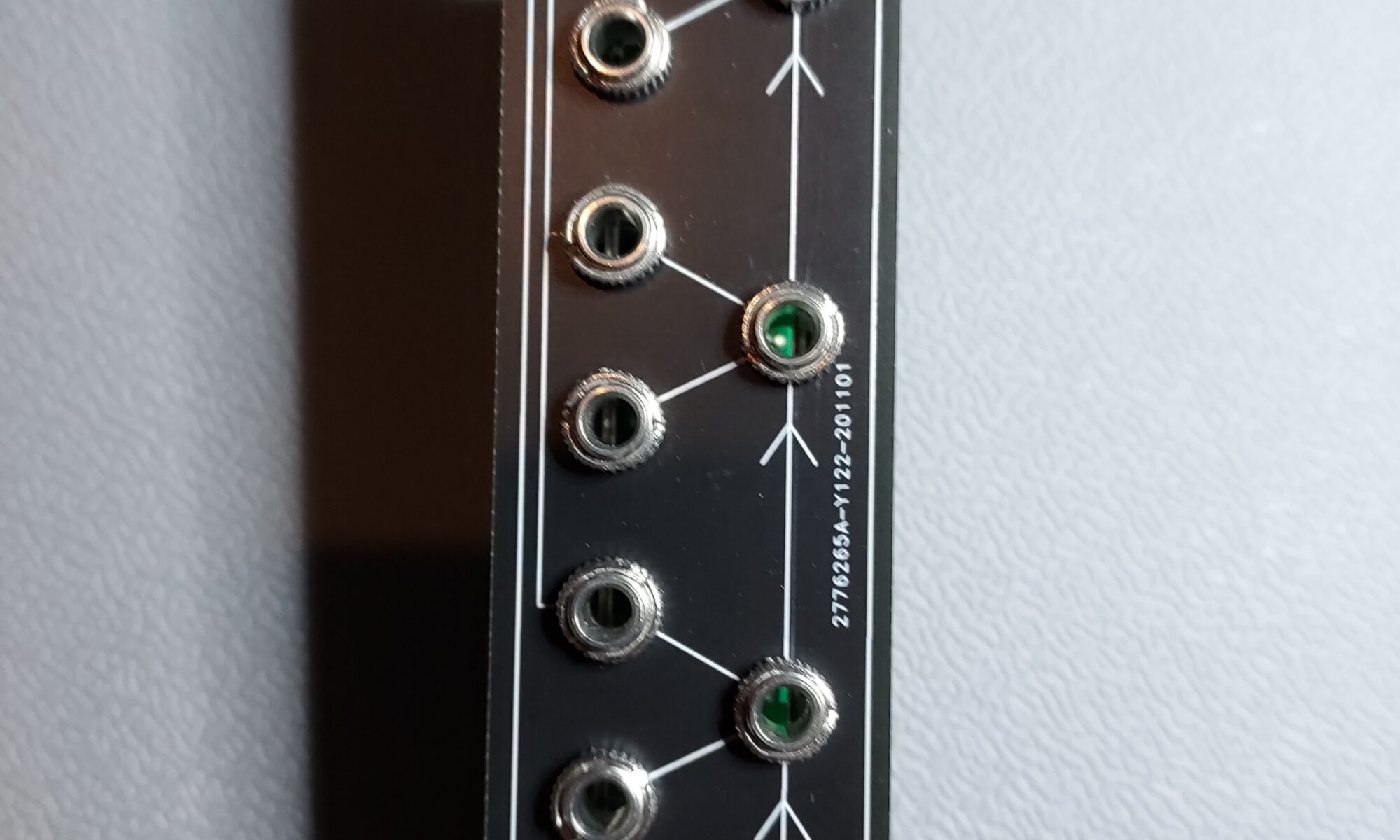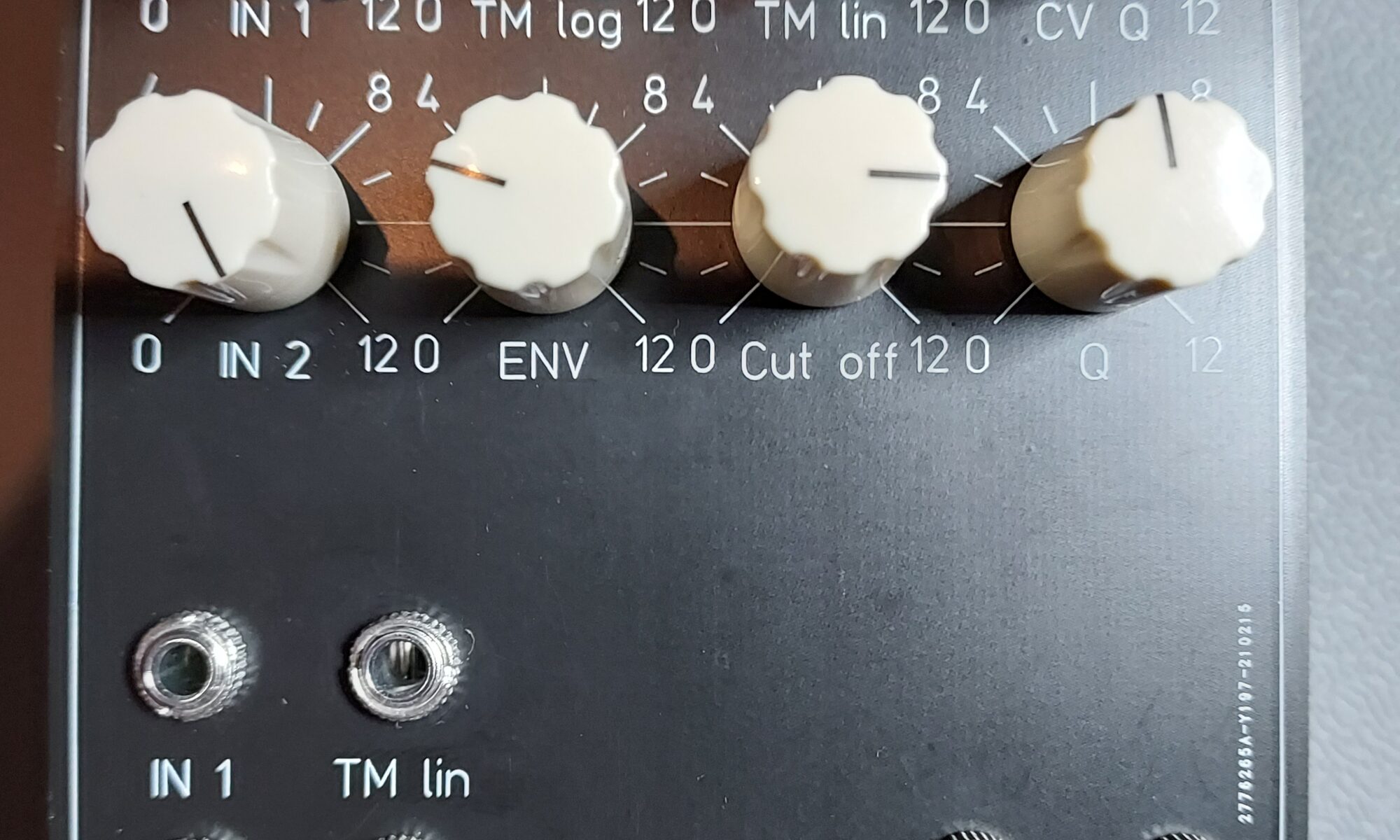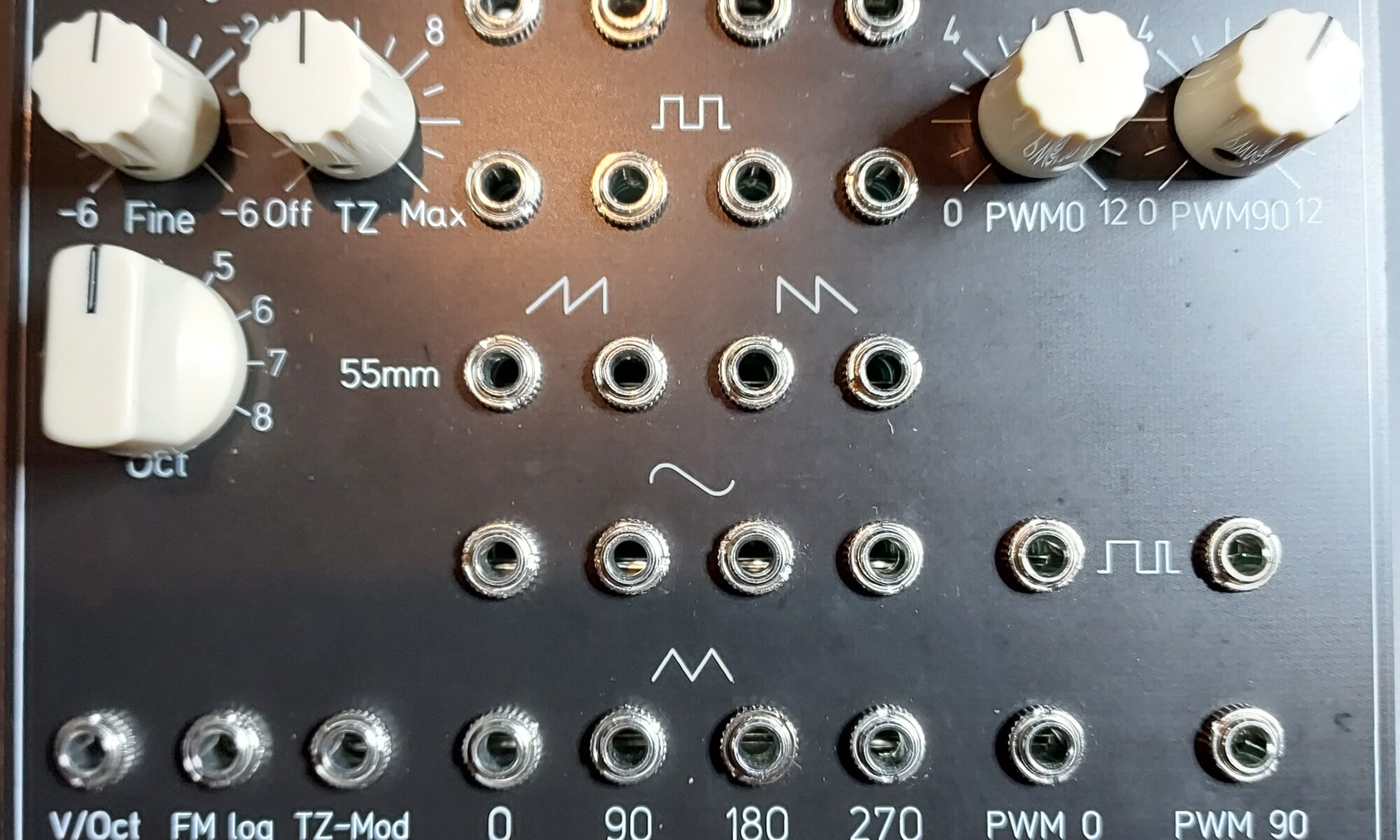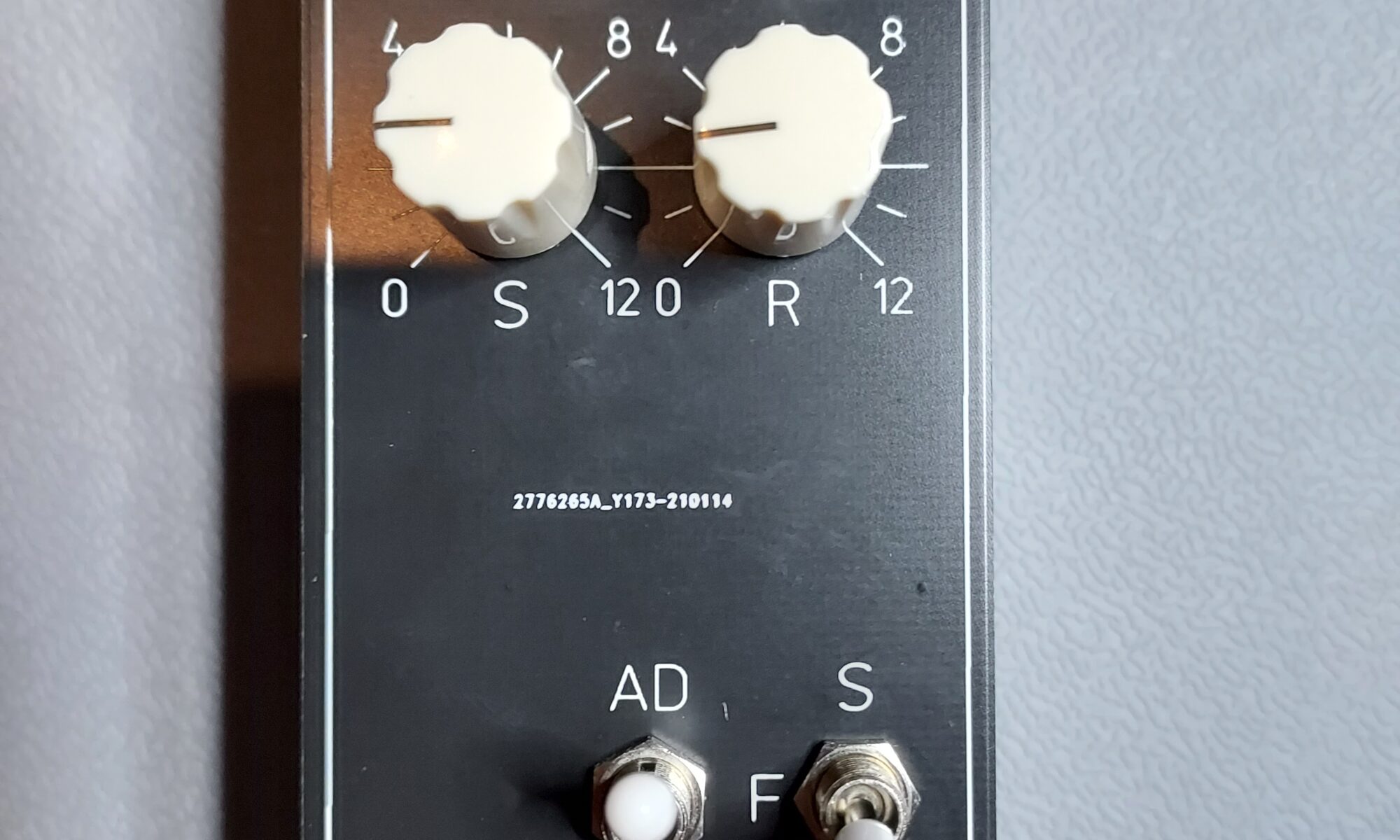Open to offers
I bought the book from Thomas Henry online at Lulu, it was a very good read and it has the MPS explained in it. I always wanted to have this module. And one day Harald had contacted Thomas Henry and got permission to design a pcb and panel for it and release it on the internet. Making this module available for me to build I was stoked. Harald’s design had banana jack and driven by 15volts. I was hoping he would release a version for eurorack 3,5 jacks and 12 volts.
On the modwiggler forum we started a discussion if it would be possible to convert his design to eurorack. I have contacted Thomas Henry and Harald and they both gave permission to do so. Thomas had just one request, please put my name on the panel so people will remember it was my design that started it. Surely we would do that. Together with other forum members we started our journey of converting it.
All in all it wasn’t that difficult. A few resistors changes and finding the right jacks and making the holes in the panel a bit smaller so it would hold the jack, that was it. The eurorack version of the MPS came alive. I was so happy to have this module finally in my rack after reading so much about it. The module can make all kind of sound. Bass drum, tom’s, lasers and much much more.
I still have to write up a build report and as you can see it’s quite a big module. I made two of these and if you are really interested I open for offers on one of them.
Again a big thanks to Thomas Henry and Haraldswerk for making it possible.
https://www.haraldswerk.de/Drums/MPS/MPS.html
https://www.lulu.com/en/ie/shop/thomas-henry/the-noise-generator-cookbook/ebook/product-1k8e6my7.html
https://www.birthofasynth.com/Thomas_Henry/Pages/MPS_project.html
Difficulty to build : Hard/ Medium, needed a few modifications and wires
https://www.quinie.nl/building-the-thomas-henry-mega-percussion-synth-mps/
